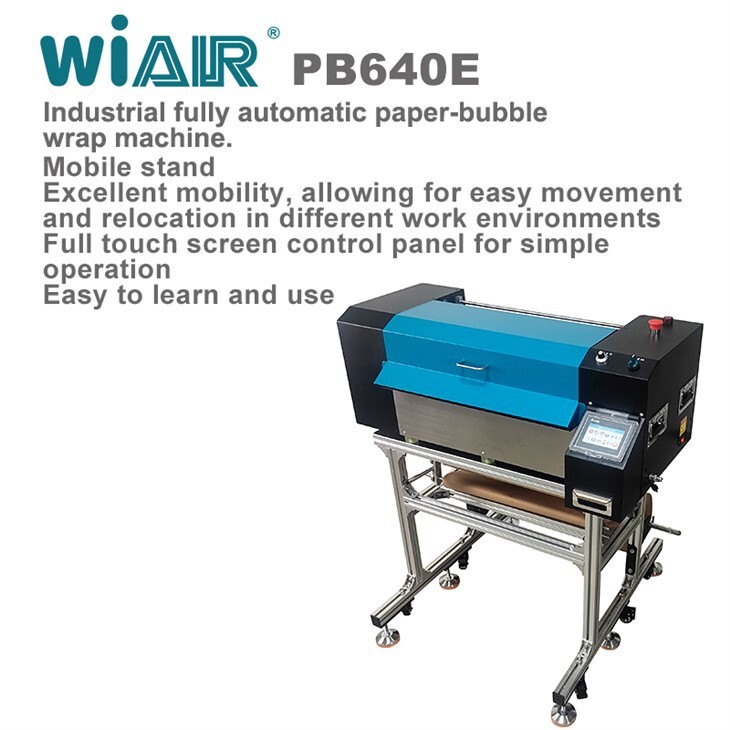
ADD: No.540, 2/F, Lane 500, XinNongHe Road, Song Jiang District, Shanghai, China
TEL: +86-21-65667541
MOB: +86 17717267676
E-MAIL: marketing@dsb.com.cn
Introduction:
Friends who pay attention to the packaging material industry may be aware of a new environmentally friendly paper cushioning packaging material quietly taking over the market, commonly referred to as "bubble paper" or "paper bubble". Why can this paper-made bubble-shaped cushioning packaging material be quickly accepted by the market? This article will analyze it from the following perspectives.
1. Cross-border e-commerce drives kraft paper cushioning packaging.
As consumer demands become more diversified, the packaging of goods also becomes more diverse. The development of e-commerce in the internet age breaks down information barriers, allowing consumers to freely choose goods, further releasing consumer demand. In the context of global plastic restrictions, kraft paper cushioning packaging material can protect goods intact in international logistics transportation and avoid "plastic taxes." When the goods complete customs clearance, the supplier must indicate the total kgs and if the packing plastic is recycled or not .
Add the non-recycled plastic for packing . Such as: THIS SHIPMENT INCLUDES TOTAL 98.00 KGS OF NON-RECYCLED PLASTIC FOR PACKING .

2.The recycling of cushioning packaging materials stimulates kraft paper cushioning packaging.
The cushioning materials in recycled packages have always been a problem for recipients. Plastic cushioning materials or foam cushioning materials have fixed shapes, making them very difficult for customers to handle after transportation and impossible to recycle and reuse. Due to the nature of paper itself, paper cushioning packaging is easy to recycle, easy to handle, and can be reused, whether for repackaging or for direct recycling and processing by government departments.

Conclusion:
Bubble paper is an excellent cushioning packaging material widely used in cross-border e-commerce for internal paper cushioning protection, providing comprehensive protection to prevent packages from being damaged during transportation. Under the promotion of "plastic tax" policies, the use of pressed bubble paper can effectively serve as a tax avoidance measure and is also beneficial for the recycling and processing after transportation.
Related News
- Green Packaging, Starting With Paper
- The Future Star Of Eco-friendly Packaging | Honeycomb Paper
- From Design To Recycling, Building A Green Circular Economy
- Farewell To Plastic Cushioning, Here Comes Paper-Bubble
- WiAIR's Mission | Protect Products, Protect The Earth
- Honeycomb Paper:Eco-Friendly, Efficient And Stylish - All In One
- How To Choose A Quality Honeycomb Paper Sleeve Forming Machine?
- From 2D To 3D Eco-friendly Cushion Packaging,are We On Trend?
- Your Product Needs Paper Cushion Packaging For Protection!
- Unveiling The Secrets Of Honeycomb Paper Sleeves Production | Efficient WiAIR-AM900
- Honeycomb Paper Sleeve Forming Machine, Efficient Production, Protecting Every Piece Of Green On The Earth
- Honeycomb Paper Sleeve VS Honeycomb Paper, A New Choice For Packaging
- Environmental Protection Packaging Has Become Explosive
- Start Adding Green To The Planet With The Honeycomb Mat Machine!
- Really? Paper As Protective Packaging Material?
- A Powerful Tool For Offices And Small Warehouses—WiAIR-PB340S Bubble Paper Machine
- Bubble Paper, Honeycomb Paper, Honeycomb Paper Sleeves - The Perfect Alternative To Plastic Packaging
- How Are Ceramic Products Safely Transported? All-round Protection Of Pressure Bubble Paper
- The Terminator Of Bubble Wrap, Why Is Paper Bubble So Popular?
- New Packaging Material Bubble Paper Provides Soft Protection For Products






